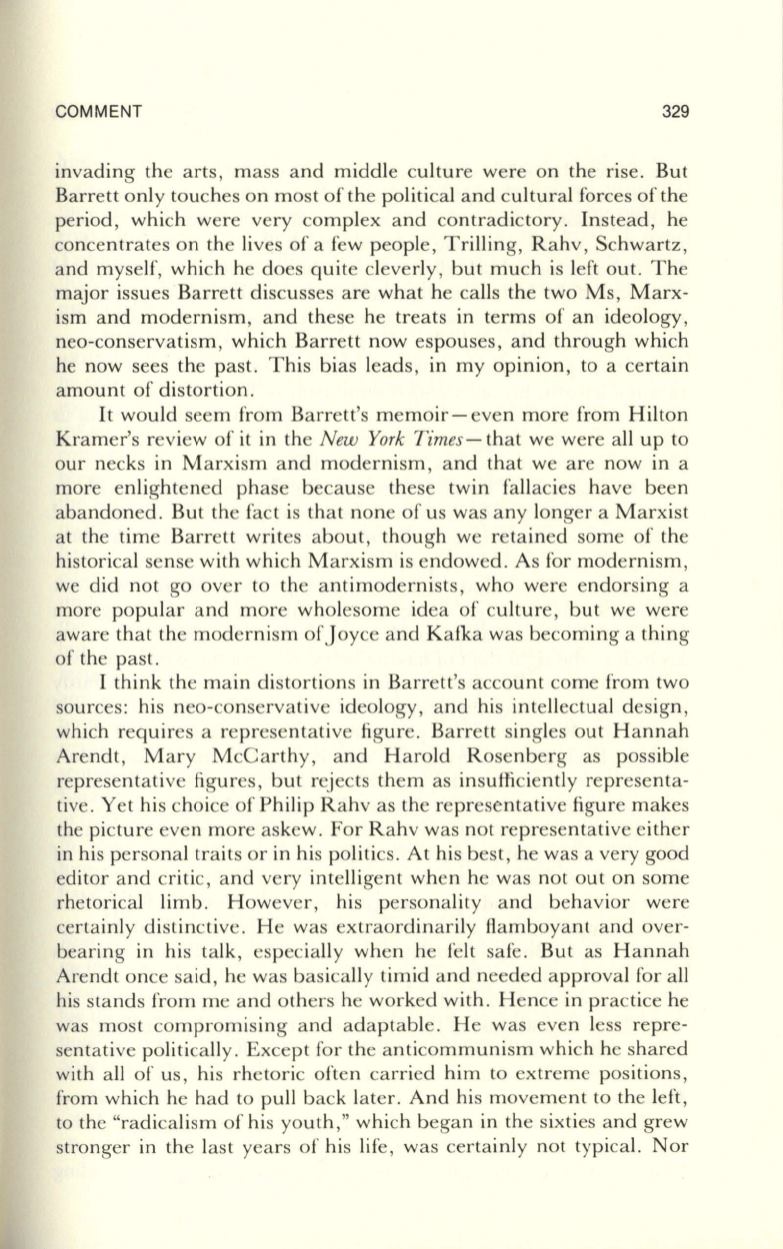
COMMENT
329
invading the arts, mass and middle culture were on the rise. But
Barrett only touches on most of the political and cultural forces of the
period, which were very complex and contradictory. Instead, he
concentrates on the lives of a few people, Trilling, Rahv, Schwartz,
and myself, which he does quite cleverly, but much is left out. The
major issues Barrett discusses are what he calls the two Ms, Marx–
ism and modernism, and these he treats in terms of an ideology,
neo-conservatism, which Barrett now espouses, and through which
he now sees the past. This bias leads, in my opinion, to a certain
amount of distortion.
It
would seem from Barrett's memoir-even more from Hilton
Kramer's review of it in the
New York Times-
that we were all up to
our necks in Marxism and modernism, and that we are now in a
more enlightened phase because these twin fallacies have been
abandoned. But the fact is that none of us was any longer a Marxist
at the time Barrett writes about, though we retained some of the
historical sense with which Marxism is endowed. As for modernism,
we did not go over to the antimodernists, who were endorsing a
more popular and more wholesome idea of cu lture, but we were
aware that the modernism ofJoyce and Kafka was becoming a thing
of the past.
I think the main distortions in Barrett's account come from two
sources: his neo-conservative ideology, and his intellectual design,
which requires a representative figure. Barrett singles out Hannah
Arendt, Mary McCarthy, and Harold Rosenberg as possible
representative figures, but rejects them as insufficiently representa–
tive. Yet his choice of Philip Rahv as the representative figure makes
the picture even more askew. For Rahv was not representative either
in his personal traits or in his politics. At his best, he was a very good
editor and critic, and very intelligent when he was not out on some
rhetorical limb. However, his personality and behavior were
certainly distinctive. He was extraordinarily flamboyant and over–
bearing in his talk, especially when he felt safe. But as Hannah
Arendt once said, he was basically timid and needed approval for all
his stands from me and others he worked with. Hence in practice he
was most compromising and adaptable. He was even less repre–
sentative politically. Except for the anticommunism which he shared
with all of us, his rhetoric often carried him to extreme positions,
from which he had to pull back later. And his movement to the left,
to the "radicalism of his youth," which began in the sixties and grew
stronger in the last years of his life, was certainly not typical. Nor


